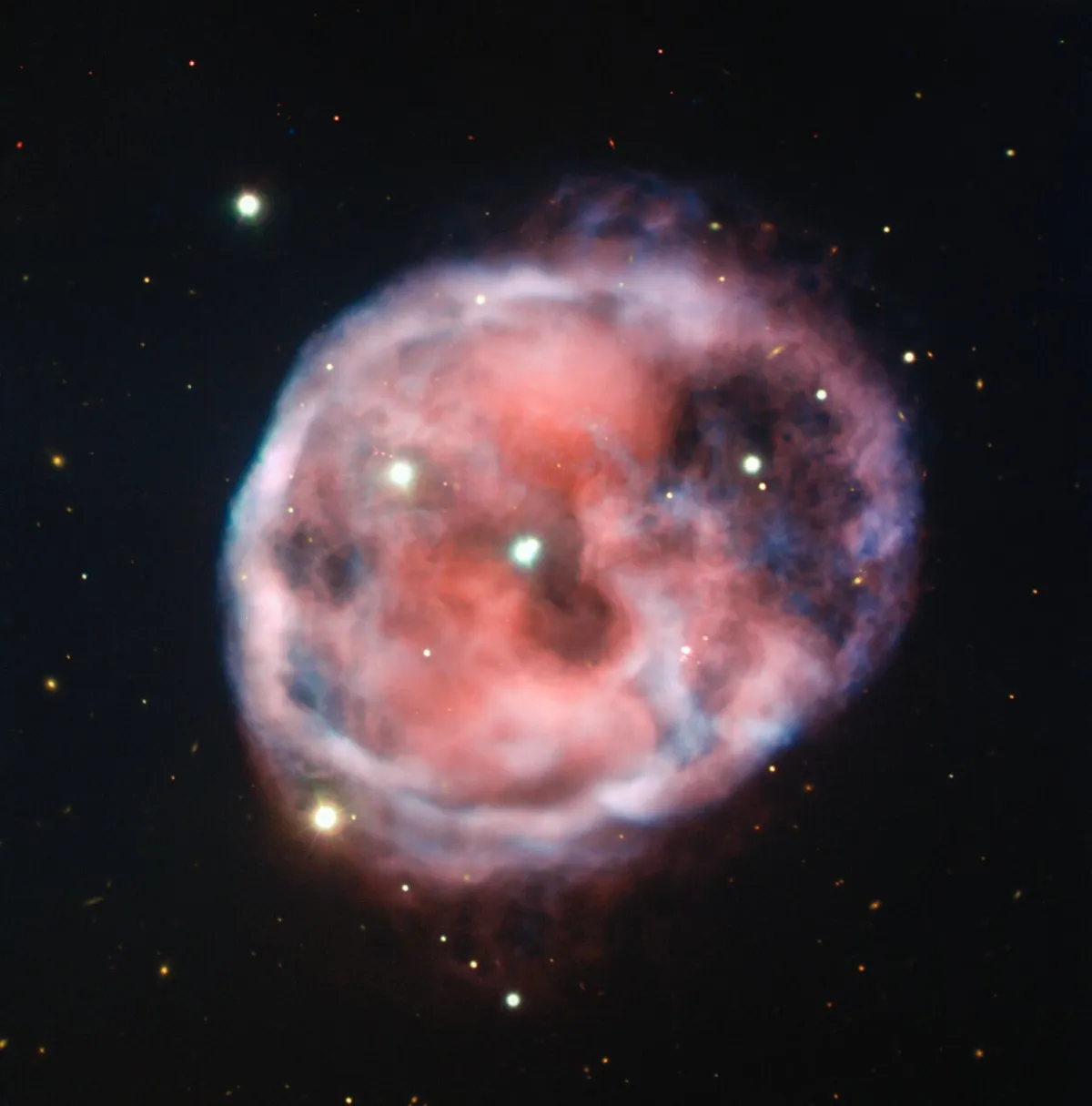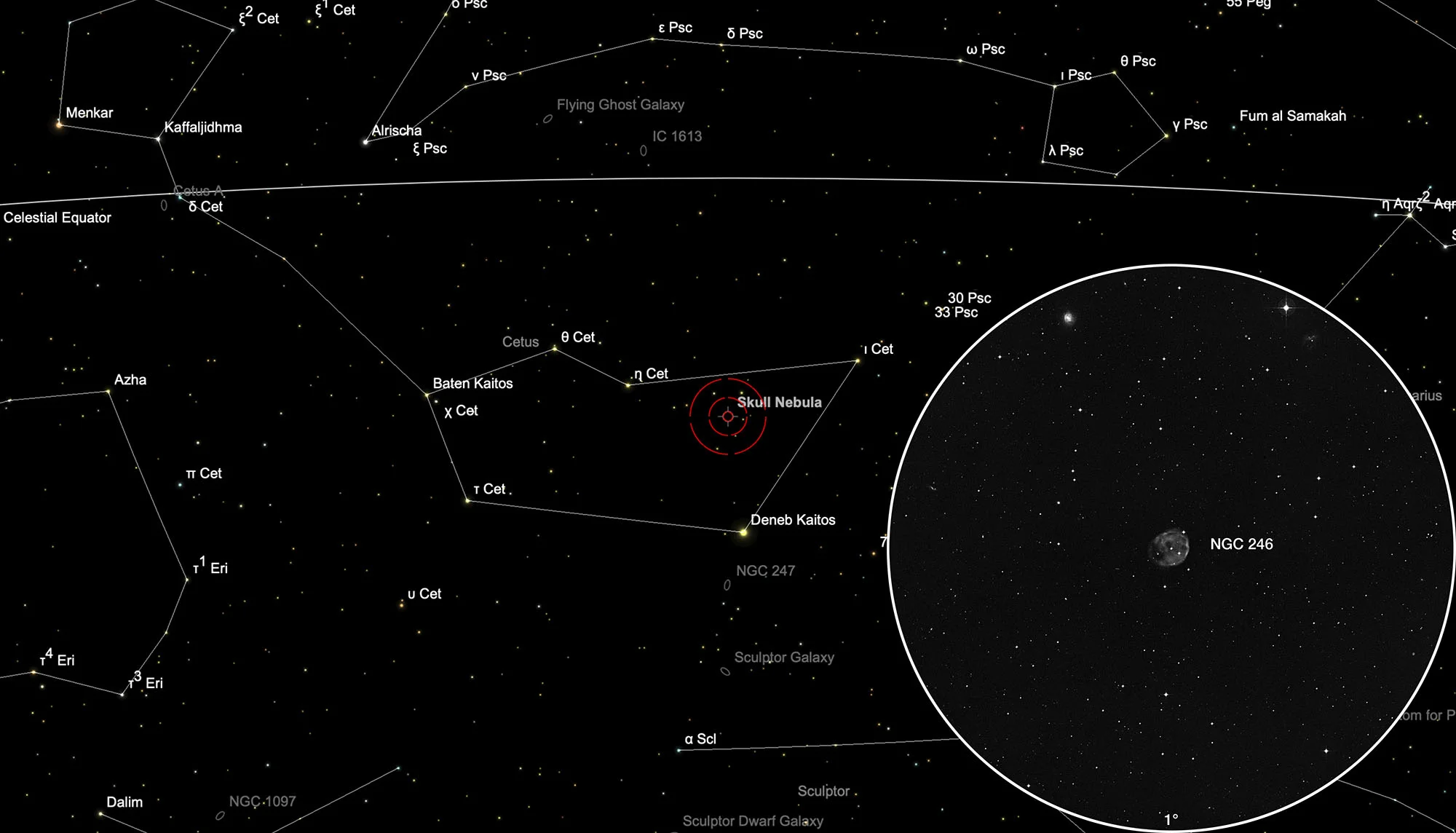Skull Nebula (NGC 246)

History
The planetary nebula NGC 246 is also known under the name «Skull Nebula». It was discovered on 27 November 1785 by William Herschel with his 18.7 inch reflector telescope with a focal length of 20 feet. He cataloged it as V 25, whereby its class «V» stood for very large nebulae. In his second part of his discoveries, published 1789 in the «Philosophical Transactions of the Royal Society of London», he described the nebula as follows: «Four or five rather large stars form a trapezoid about 5' in diameter. The enclosed space is filled with weakly demarcated, milky nebula. The stars do not appear To have a connection with the nebula.» [464]
Physical Properties
The distance of the nebula is 1'600 light years. Diameters range from 2.2 to 4-6 light years.
In 2014 it was discovered that the central white dwarf star in 500 AU is orbited by a red dwarf star (not visible in the photo). Their interaction is probably related to the formation of the planetary nebula. This pair is orbited by a brighter star at a distance of 1900 AU. This is the first known triple star system within a planetary nebula. [208]
| Designations | PN G118.8-74.7: NGC 246, PK 118-74.1, ARO 43, VV 4, VV' 7 |
| Right Ascension (J2000.0) | 00h 47m 04s |
| Declination (J2000.0) | -11° 52' 22" |
| Dimensions | 245." (optical), 280." (radio) |
| Distance | 0.57 kpc |
| Radial Velocity | -46.0 ± 6.0 km/s |
| Expansion Velocity | 39.0 (O-III) km/s |
| C-Star Designations | AG82 8, BD -12 134, CSI -12 -00445, PHL 829, PLX 152, TD1 31081, UBV 644 |
| C-Star Magnitude | U: 10.41, B: 11.60, V: 11.96 |
| C-Star Spectral Type | WC OVI, O(C) |
| Discoverer | HERSCHEL 1785 |
Finder Chart
The Skull Nebula is located in the belly of the whale. Connect the stars η Ceti - ι Ceti, halve the distance and place the Telrad underneath so that the outermost ring comes to rest on the line. The best observation time is June to March.
Visual Observation
400 mm Aperture: In the 21 mm Tele Vue Ethos eyepiece (85x) and with O-III filter, NGC 246 appears as a large, round, slightly elongated nebula. Two very faint dark spots can be seen in the nebula and one edge is slightly brighter. — 400 mm f/4.5 Taurus Dobsonian, Glaubenberg, 6. 11. 2020 Bernd Nies
